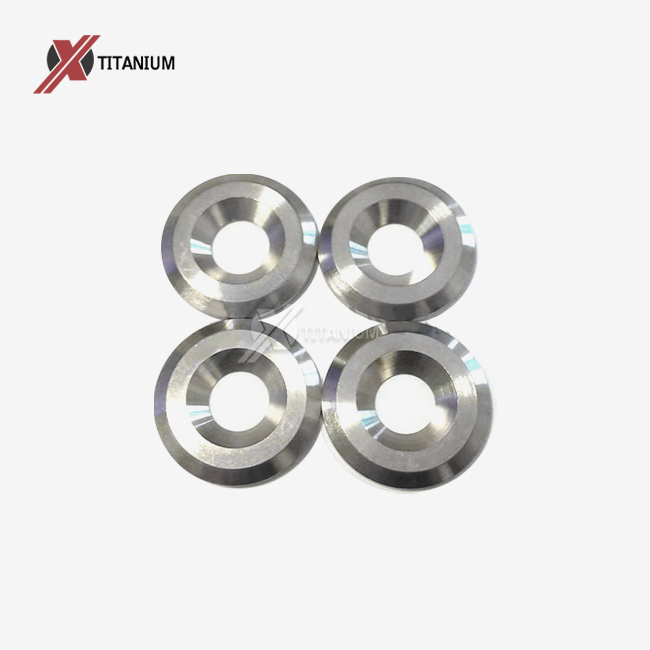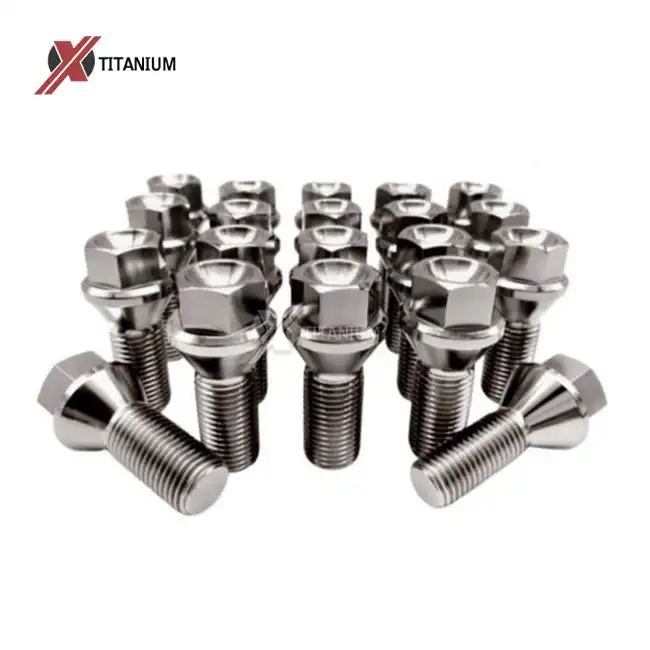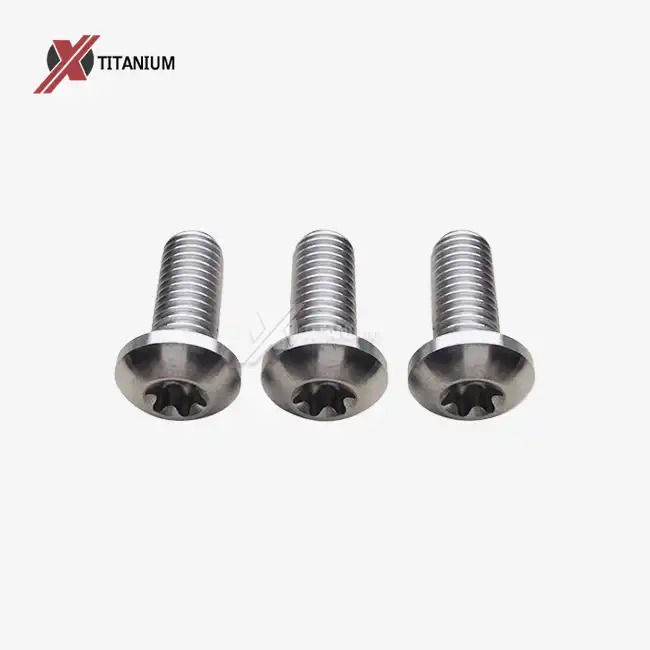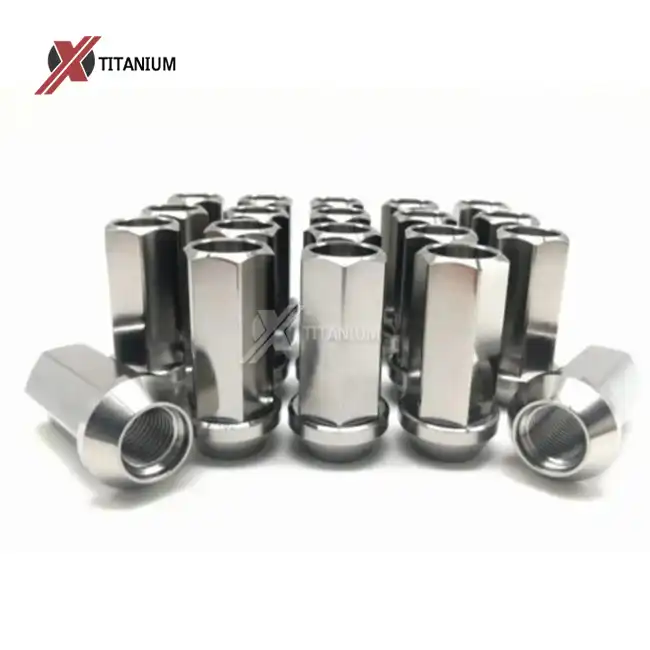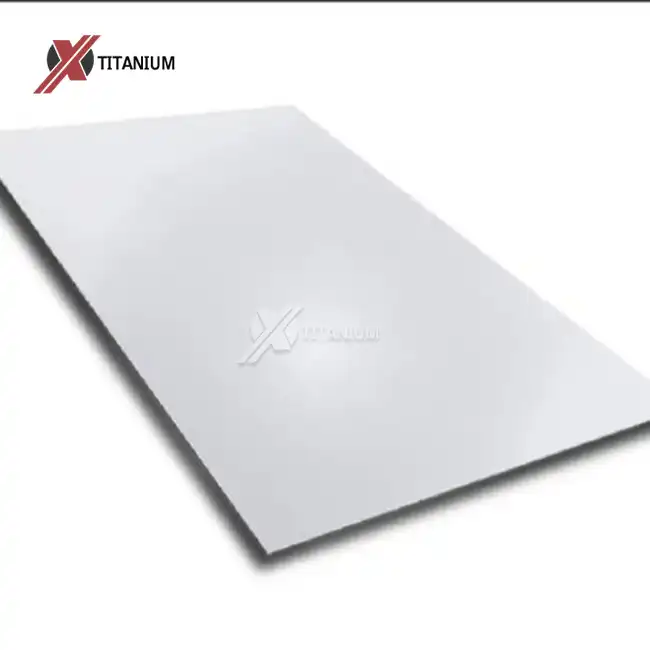Comprehending Titanium Countersunk Washers and Their Applications
What Are Titanium Countersunk Washers?
Titanium countersunk washers are specialized fastening components designed to provide a flush surface when used with countersunk screws or bolts. These washers are crafted from high-grade titanium alloys, typically Grade 2 or Grade 5 titanium, offering an exceptional combination of strength, lightweight properties, and corrosion resistance. The unique conical shape of these washers allows them to sit perfectly within countersunk holes, creating a smooth, level surface once installed.
Advantages of Titanium Countersunk Washers
The use of titanium in these washers brings numerous benefits to various applications. Titanium's remarkable strength-to-weight ratio makes these washers ideal for weight-sensitive projects, particularly in aerospace and automotive industries. The material's inherent resistance to corrosion and chemical attack ensures long-lasting performance in harsh environments, including marine applications and chemical processing plants. Additionally, titanium's biocompatibility makes these washers suitable for medical implants and devices.
Common Applications
Titanium countersunk washers find extensive use across multiple industries. In aerospace, they're essential components in aircraft fuselage and engine assemblies. The automotive sector utilizes them in high-performance vehicles and racing applications. Marine engineers rely on these washers for shipbuilding and underwater equipment due to their corrosion resistance. In the medical field, titanium countersunk washers are integral in orthopedic implants and surgical instruments. They're also prevalent in high-end consumer products, such as premium bicycles and outdoor gear, where weight reduction and durability are paramount.
Proper Installation Techniques for Titanium Countersunk Washers
Preparation and Safety Measures
Before beginning the installation process, it's imperative to gather all necessary tools and materials. This typically includes the titanium countersunk washers, appropriate fasteners, a torque wrench, and any specific tools recommended by the manufacturer. Ensure your work area is clean and well-lit to prevent contamination and improve visibility. Wear appropriate personal protective equipment (PPE), such as safety glasses and gloves, to guard against potential injuries during installation.
Step-by-Step Installation Guide
1. Surface Preparation: Begin by thoroughly cleaning the mounting surface. Remove any dirt, grease, or debris that could interfere with the washer's proper seating or compromise the integrity of the assembly.
2. Alignment: Carefully position the titanium countersunk washer over the pre-drilled hole. The tapered side of the washer should face outward, allowing it to sit flush within the countersunk hole.
3. Fastener Insertion: Select the appropriate fastener for your application. Gently insert it through the washer and into the hole, ensuring it's properly aligned and doesn't cross-thread.
4. Initial Tightening: Using your fingers or a tool, begin tightening the fastener. This initial tightening helps seat the washer correctly and prevents misalignment during final tightening.
5. Torque Application: Employ a calibrated torque wrench to tighten the fastener to the manufacturer's specified torque value. This step is crucial for achieving the optimal balance between secure fastening and preventing damage to the washer or surrounding materials.
6. Final Inspection: Once tightened, visually inspect the installation. The washer should sit perfectly flush with the surface, with no gaps or protrusions. Check for any signs of damage or stress on the washer or surrounding area.
Common Mistakes to Avoid
While installing titanium countersunk washers, be wary of these frequent errors:
- Overtightening: Excessive torque can deform the washer or damage the mating surfaces, compromising the assembly's integrity.
- Improper Alignment: Failing to correctly align the washer can result in uneven pressure distribution and potential failure points.
- Using Incorrect Tools: Employing tools not suited for titanium fasteners can lead to surface damage or improper installation.
- Neglecting Surface Preparation: Skipping proper cleaning can result in poor seating and reduced effectiveness of the washer.
- Mismatching Components: Ensure the washer size and material are compatible with your fastener and application requirements.
Maintenance and Care for Titanium Countersunk Washer Assemblies
Regular Inspection Procedures
To ensure the continued effectiveness of titanium countersunk washer assemblies, implement a regular inspection routine. Visually examine the washers and surrounding areas for signs of wear, corrosion, or loosening. Pay special attention to high-stress areas or those exposed to harsh conditions. Use specialized tools, such as borescopes or ultrasonic testing equipment, for hard-to-reach or critical assemblies. Document your findings and track any changes over time to identify potential issues before they escalate.
Cleaning and Protection Methods
Maintaining the cleanliness of titanium countersunk washer assemblies is crucial for their longevity. Use mild, non-abrasive cleaners and soft brushes to remove dirt and debris. Avoid harsh chemicals that could potentially react with the titanium. After cleaning, ensure the assembly is thoroughly dried to prevent moisture accumulation. In corrosive environments, consider applying protective coatings or sealants specifically designed for titanium components. These can provide an additional barrier against environmental factors without compromising the washer's performance.
Replacement and Upgrade Considerations
Despite titanium's durability, there may come a time when replacement is necessary. Consider replacing titanium countersunk washers if you observe significant wear, deformation, or corrosion. When upgrading or replacing, ensure the new washers meet or exceed the original specifications. Take this opportunity to reassess your assembly's needs – you might benefit from upgrading to a higher-grade titanium alloy or a different washer design that better suits your current requirements. Always consult with a fastener specialist or engineer when making significant changes to ensure compatibility and performance.
Conclusion
Proper installation and maintenance of titanium countersunk washers are essential for maximizing their benefits in various applications. By following the outlined techniques and avoiding common pitfalls, you can ensure optimal performance and longevity of your assemblies. Remember, the key lies in careful preparation, precise installation, and regular maintenance. For more information about titanium countersunk washers and other titanium products, don't hesitate to reach out to us at info@cltifastener.com or djy6580@aliyun.com. Our team of experts is always ready to assist you with your titanium fastener needs.
